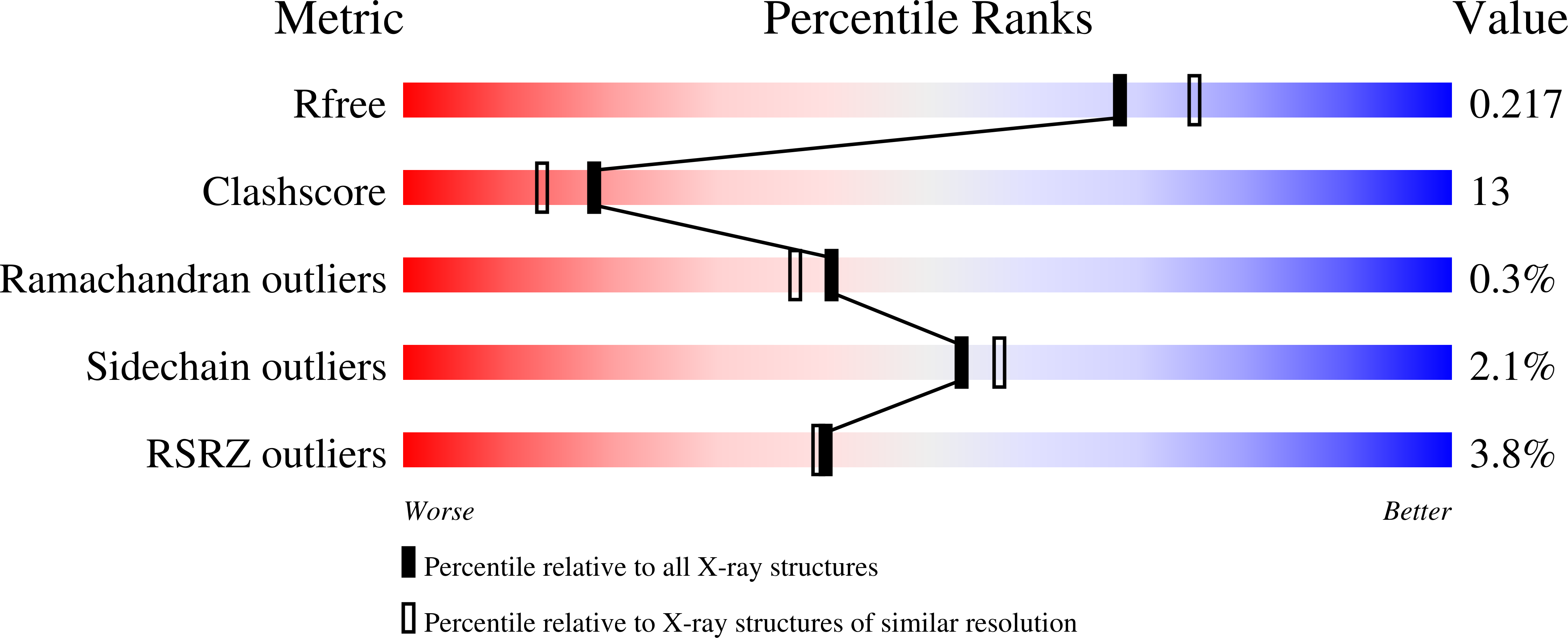Structural basis for catalytic and inhibitory mechanisms of human prostaglandin reductase PTGR2.
Wu, Y.H., Ko, T.P., Guo, R.T., Hu, S.M., Chuang, L.M., Wang, A.H.J.(2008) Structure 16: 1714-1723
- PubMed: 19000823
- DOI: https://doi.org/10.1016/j.str.2008.09.007
- Primary Citation of Related Structures:
2ZB3, 2ZB4, 2ZB7, 2ZB8 - PubMed Abstract:
PTGR2 catalyzes an NADPH-dependent reduction of the conjugated alpha,beta-unsaturated double bond of 15-keto-PGE(2), a key step in terminal inactivation of prostaglandins and suppression of PPARgamma-mediated adipocyte differentiation. Selective inhibition of PTGR2 may contribute to the improvement of insulin sensitivity with fewer side effects. PTGR2 belongs to the medium-chain dehydrogenase/reductase superfamily. The crystal structures reported here reveal features of the NADPH binding-induced conformational change in a LID motif and a polyproline type II helix which are critical for the reaction. Mutation of Tyr64 and Tyr259 significantly reduces the rate of catalysis but increases the affinity to substrate, confirming the structural observations. Besides targeting cyclooxygenase, indomethacin also inhibits PTGR2 with a binding mode similar to that of 15-keto-PGE(2). The LID motif becomes highly disordered upon the binding of indomethacin, indicating plasticity of the active site. This study has implications for the rational design of inhibitors of PTGR2.
Organizational Affiliation:
Institute of Biological Chemistry, Academia Sinica, Taipei 11529, Taiwan.

















